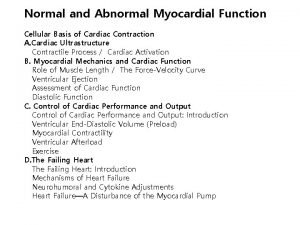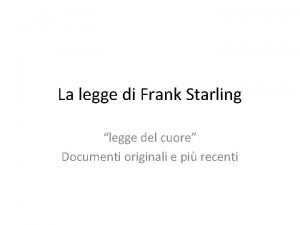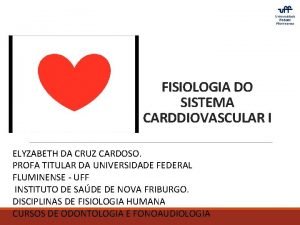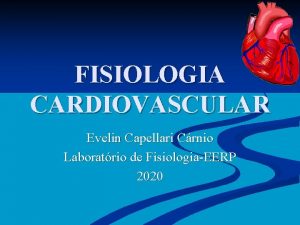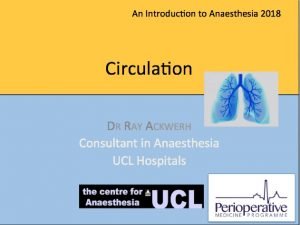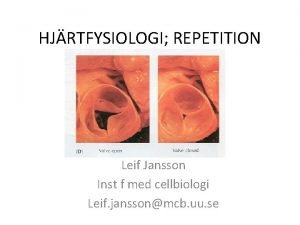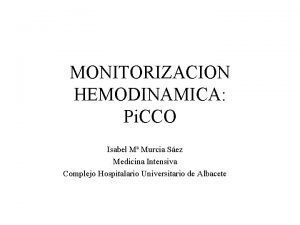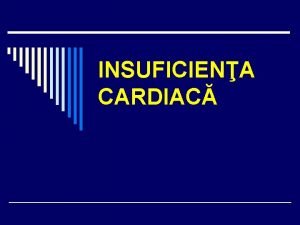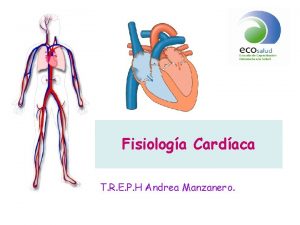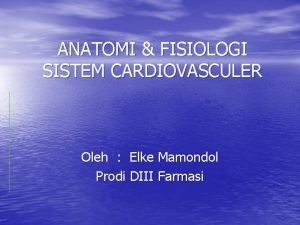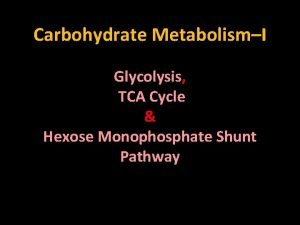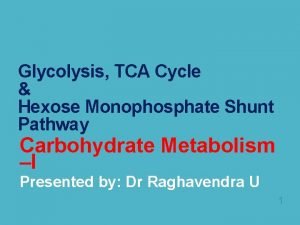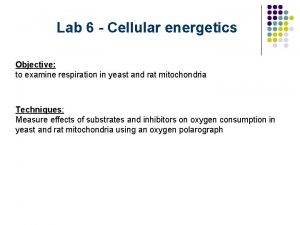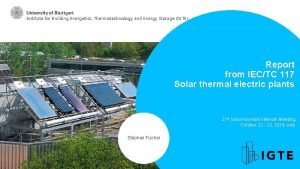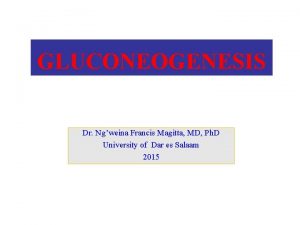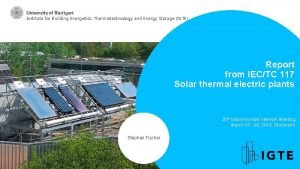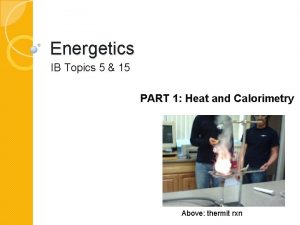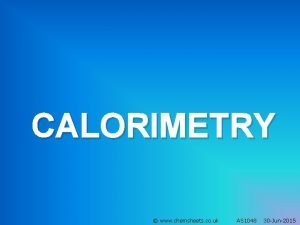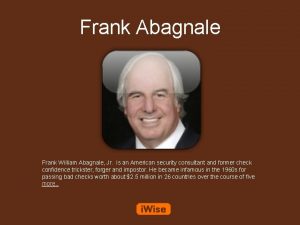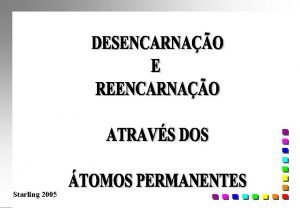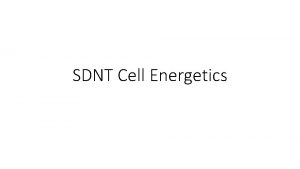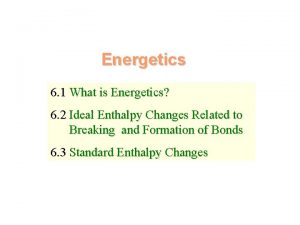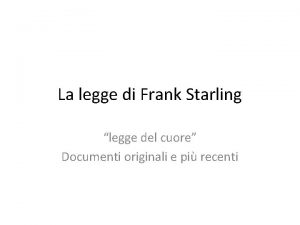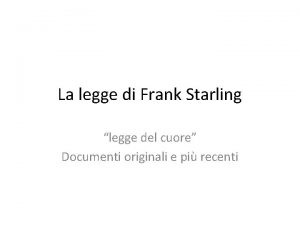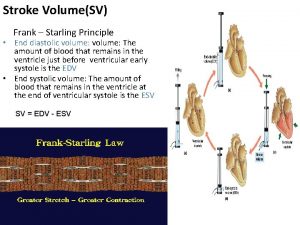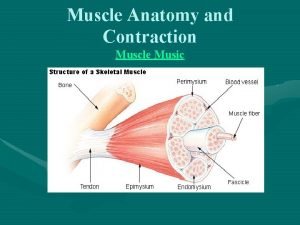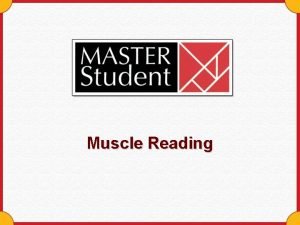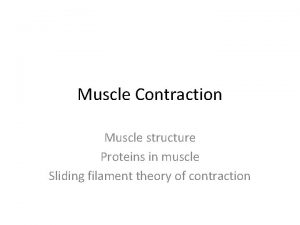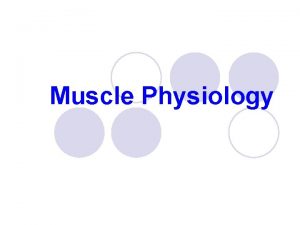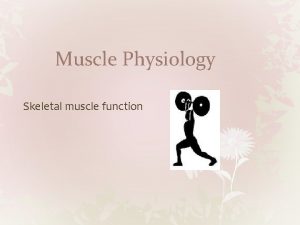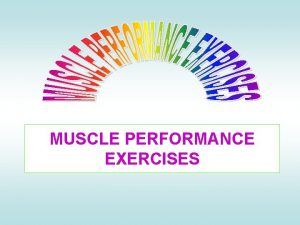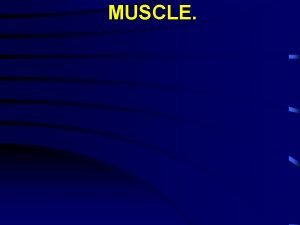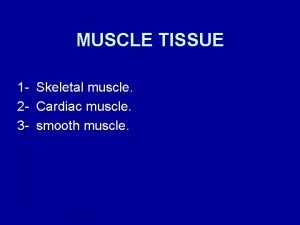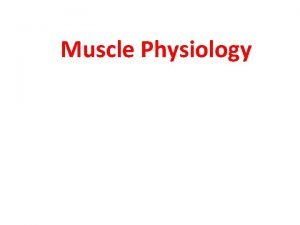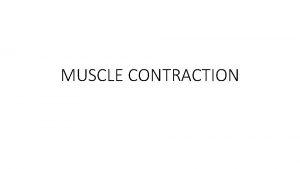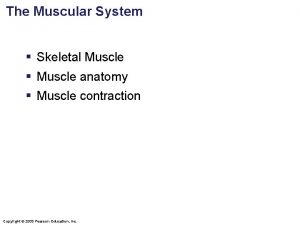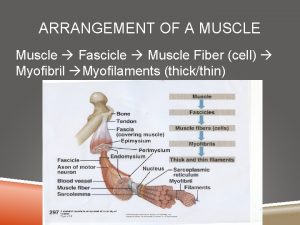1 MUSCLE ENERGETICS Frank starling Law Greater the

























- Slides: 25

1


MUSCLE ENERGETICS

Frank starling Law Greater the initial length of the Sarcomere, Greater will be the Force of Contraction

LENGTH-TENSION Diagram (Frank-Starling Law) Greater the initial length of the Sarcomere, Greater will be the Force of Contraction Z M A X I M U M Z

Energy Sources & metabolism in skeletal Muscles • ATP- (Immediate source) Phosphocreatinine Anaerobic glycolysis Aerobic Glycolysis

Muscle Contraction • In muscular system contraction means muscle fibers generating tension with the help motor neurons and while under tension the muscle may shorten , lengthen or remain the same.

• Muscle tension: The force exerted on an object by a muscle is known as muscle tension • Muscle Load: The force exerted on the muscle by an object is the muscle load.

Characteristics of Whole Muscle Contraction. Types of Contraction Isotonic. Length changes but Tension remains constant. Two Forms of Isotonic Cont. 1. Concentric (Muscle shortens while lifting the weight) 2. Eccentric ( while putting the weight back, the muscle lengthens) Or walking down hill

Types of Contraction • Isometric. Tension is increased but Length remains constant. • . e. g Isometric Contraction in the heart

Isometric versus Isotonic contraction • Latent period is longer in isotonic contraction as compared to isometric contraction

Characteristics of Whole Muscle Contraction Simple Muscle Twitch; Comprised of 3 phases: 1. Latent Period. 2. Contraction Phase 3. Relaxation phase

Isometric Contractions for different Types of muscles

Treppe (Stair-Case Phenomenon) • Treppe: • When a series of maximal stimuli are delivered to Skeletal muscle just below the tetanizing frequency, the tension developed by each Twitch increases (Second stimulus elicits a stronger response) • Perhaps due to increase in intracellular Ca 2+.

TETANIZING FREQUENCY • How many times you are stimulating the nerve fiber per second to obtain full tetanization. 10 -15 stimuli/sec

SUMMATION • The adding together of individual twitch contractions to increase the intensity of overall muscle contraction is called summation. Multiple fiber summation Frequency summation----Tetanization

Motor Unit Single Motor Neuron & all Muscle Fibers it innervates constitute a single Motor Unit. α- motor N

Some Diseases related to Muscles

MUSCLE FATIGUE • Prolonged and strong contraction of a muscle leads to muscle fatigue. • Characteristics of Fatigued muscle 1. Decreased shortening velocity 2. Slower rate of relaxation

• Onset and rate of development of Fatigue include 1. Type of skeletal muscle fiber that is active. 2. Intensity and duration of contraction. 3. Degree of individual fitness.

TYPES OF FATIGUE • High frequency fatigue Includes high frequency short duration exercise e. g weight lifting. • Low frequency fatigue Includes low intensity long duration exercise e. g long distance running. • Central command fatigue

• Causes of high frequency fatigue Conductive fatigue Lactic acid build up Inhibition of cross bridge cycling. • Causes of low frequency fatigue Decreased muscle glycogen low blood glucose Dehydration Junctional fatigue

• Central command fatigue Appropriate regions of cerebral cortex fail to send excitatory signals to the motor neurons.

• Fatigue results mainly from inability of the contractile and metabolic processes of the muscle fiber to continue supplying the same work output.

 Lvedp normal range
Lvedp normal range Frank starling law
Frank starling law Frank starling law
Frank starling law Grafico frank starling
Grafico frank starling Coração estruturas
Coração estruturas Mecanismo de frank starling
Mecanismo de frank starling Frank starling curve
Frank starling curve Frank starlings hjärtlag
Frank starlings hjärtlag Oabaina
Oabaina Volumen telediastolico
Volumen telediastolico Ley de frank starling
Ley de frank starling Mecanism frank starling
Mecanism frank starling Batmotropismo
Batmotropismo Cardiovasculer
Cardiovasculer Anaplerosis
Anaplerosis Hcoh
Hcoh Significance of glycolysis
Significance of glycolysis Azide electron transport chain
Azide electron transport chain Energetics power tower 180
Energetics power tower 180 Gluconeogenesis from lactate
Gluconeogenesis from lactate Building energetics
Building energetics Ib energetics
Ib energetics Energetics janesville
Energetics janesville Chemsheets calorimetry 1
Chemsheets calorimetry 1 Frank william abagnale sr
Frank william abagnale sr Smooth muslce
Smooth muslce
